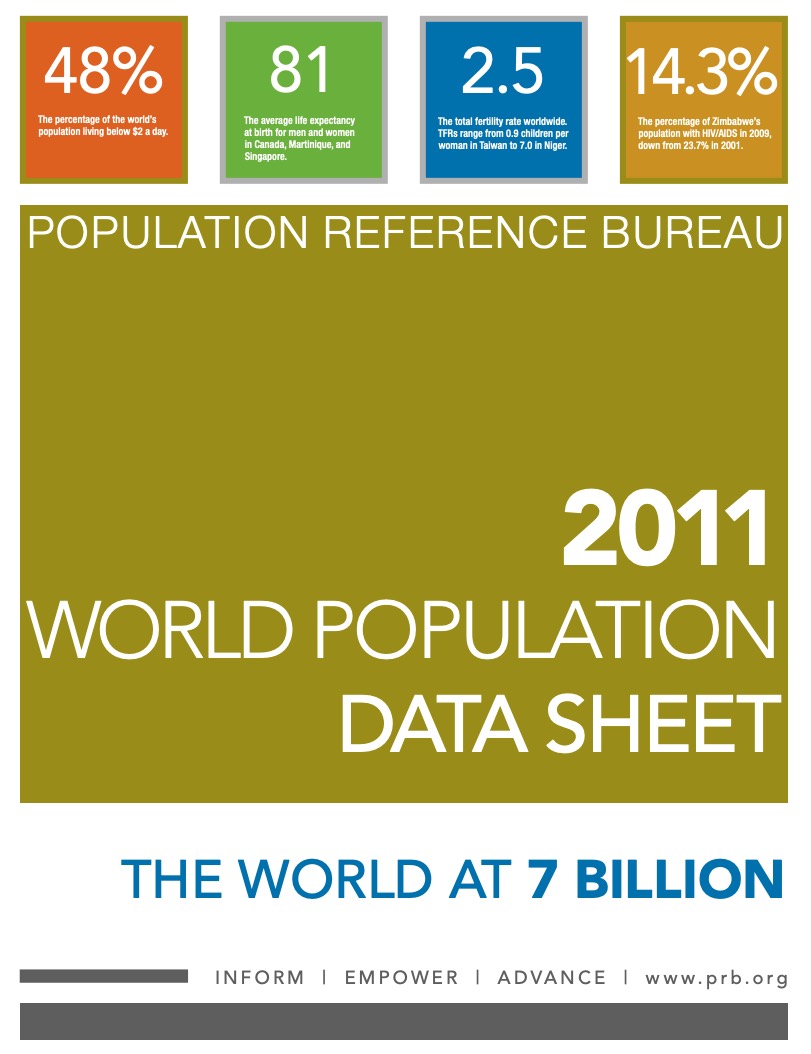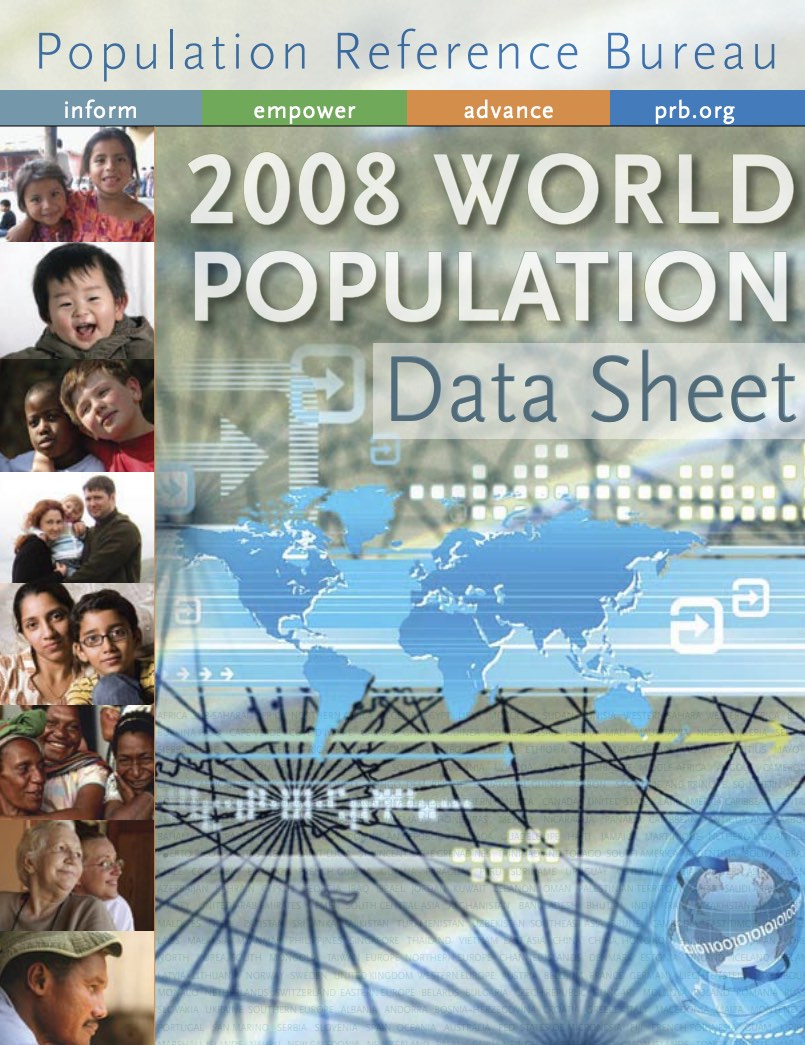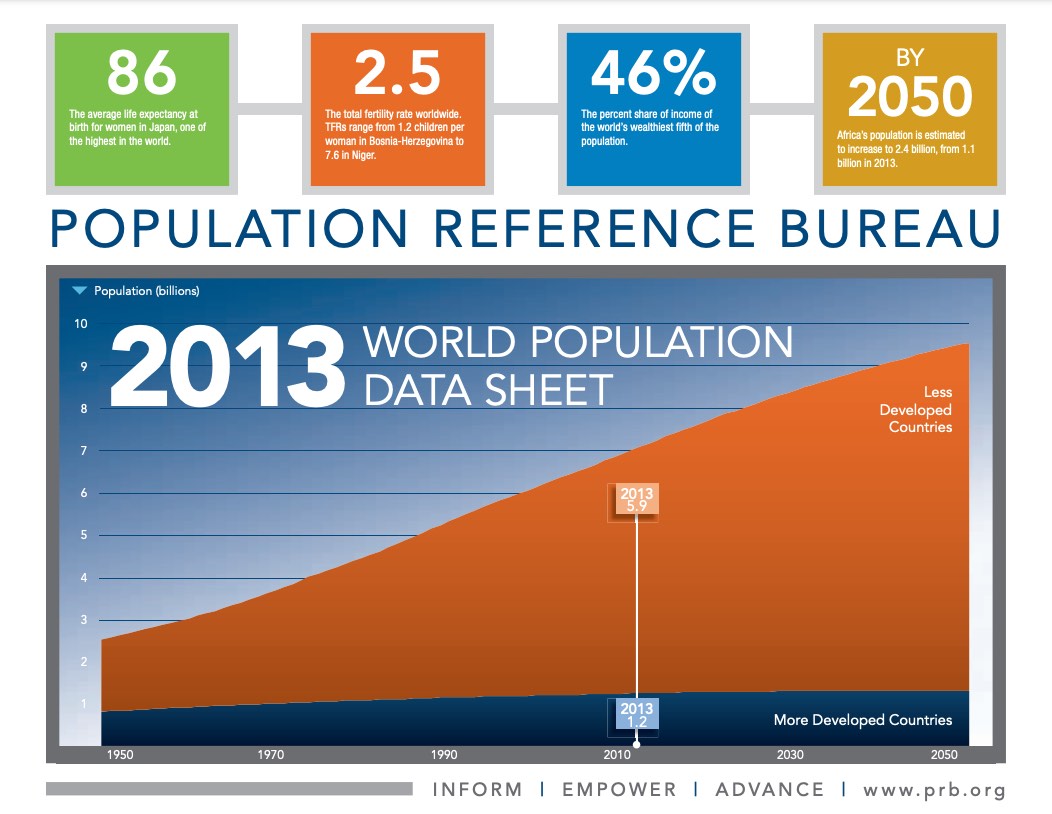2011 World Population Data Sheet
(2011) Global population will reach 7 billion later in 2011, just 12 years after reaching 6 billion in 1999.

(2011) Global population will reach 7 billion later in 2011, just 12 years after reaching 6 billion in 1999.

Project: PACE: Policy, Advocacy, and Communication Enhanced for Population and Reproductive Health
This year’s data include indicators on the status of women in key areas such as education, employment, and government. Looking at the numbers across the world, we can get a picture of women’s progress towards equality.

(2008) The demographic divide—the inequality in the population and health profiles of rich and poor countries—is widening.
(July 2002) The HIV/AIDS epidemic in Africa is often described as a crisis that demands the same kind of mobilization and response that would be necessary were a country at war.
(2002) Environ 13 % des décès maternels à l'échelle mondiale sont le résultat de complications d'avortements dangereux1, et dans certaines régions ce chiffre représente jusqu'à un tiers de ces décès.
(2002) In 2000, just over 1 million people in the United States reported "Arab" ancestry in the Census 2000 Supplementary Survey.
(2002) It is difficult to compare poverty levels in different countries. Countries not only have different currencies, they have different family income levels, consumption patterns, prices for goods and services (which affect purchasing power), spending patterns, and family and demographic characteristics.

(2013) Africa, by far the world’s poorest region, will record the largest amount of population growth of any world region between now and 2050.

The Census Bureau’s state-level population estimates for 2018 provide a window into the potential redistribution of seats in the U.S. House of Representatives when the 2020 Census numbers are released.
Child marriage is a human rights violation.